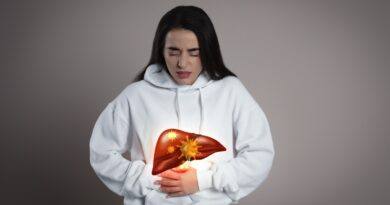The Vital Role Of Physiotherapy In Everyday Life: Remarkably Powerful
Introduction
Physiotherapy, a branch of healthcare science, plays a significant role in restoring and maintaining physical function, enhancing mobility, and promoting overall well-being. With its holistic approach and evidence-based techniques, physiotherapy has become an indispensable part of modern healthcare. In this comprehensive article, we will delve into the fundamentals of physiotherapy, its key principles, the range of conditions it addresses, and the essential role it plays in our day-to-day lives.
Section 1: Understanding Physiotherapy
1.1 Definition and Scope
Physiotherapy, also known as physical therapy, is a specialised field that focuses on diagnosing, treating, and preventing physical impairments, disabilities, and movement disorders. It encompasses various therapeutic techniques, exercises, and manual therapies to optimise physical function and improve quality of life.
1.2 Principles and Approaches
Physiotherapy is guided by key principles such as evidence-based practice, patient-centered care, and a biopsychosocial approach. It involves a comprehensive assessment of the individual’s physical condition, identifying the underlying causes of dysfunction, and developing personalised treatment plans to address specific needs.
Section 2: The Importance of Physiotherapy in Everyday Life
2.1 Promoting Musculoskeletal Health
Physiotherapy plays a crucial role in managing musculoskeletal conditions such as back pain, arthritis, sports injuries, and postoperative rehabilitation. Through therapeutic exercises, manual therapies, and modalities like heat and cold therapy, physiotherapists help individuals regain strength, flexibility, and function, facilitating their return to daily activities and preventing future injuries.
2.2 Enhancing Mobility and Independence
For individuals with mobility limitations, physiotherapy is instrumental in improving movement and function. Whether it’s assisting individuals with neurological conditions like stroke or spinal cord injury or aiding older adults in maintaining balance and preventing falls, physiotherapists employ specialised techniques and assistive devices to enhance mobility and promote independent living.
2.3 Respiratory Rehabilitation
Physiotherapy also plays a vital role in respiratory care. Through techniques like breathing exercises, airway clearance techniques, and chest physiotherapy, physiotherapists help individuals with respiratory conditions, such as asthma, chronic obstructive pulmonary disease (COPD), and cystic fibrosis, improve lung function, manage symptoms, and enhance overall respiratory health.
2.4 Women’s Health and Pelvic Floor Rehabilitation
Physiotherapy is essential in addressing women’s health concerns, including pelvic floor dysfunction, urinary incontinence, and prenatal and postnatal care. Physiotherapists specialising in women’s health offer pelvic floor exercises, education on posture and body mechanics, and techniques like biofeedback to improve pelvic floor muscle function, alleviate discomfort, and promote optimal well-being.
2.5 Cardiac Rehabilitation
In the realm of cardiac care, physiotherapy plays a vital role in cardiac rehabilitation programmes. Through structured exercise programmes, education on heart-healthy lifestyle modifications, and monitoring individuals’ cardiovascular responses, physiotherapists support individuals recovering from heart conditions, such as heart attacks and heart surgeries, to regain cardiovascular fitness, reduce risk factors, and enhance overall cardiac health.
Section 3: Common Physiotherapy Techniques and Modalities
3.1 Therapeutic Exercises
Therapeutic exercises form the foundation of physiotherapy interventions. These exercises are tailored to address specific impairments and improve strength, flexibility, balance, and coordination. Physiotherapists prescribe exercises ranging from basic range-of-motion exercises to advanced functional movements, depending on the individual’s needs.
3.2 Manual Therapy
Manual therapy techniques involve skilled hands-on manipulation of joints, soft tissues, and muscles. These techniques, such as joint mobilisation, soft tissue mobilisation, and massage, help relieve pain, improve joint mobility, restore tissue flexibility, and enhance overall function.
3.3 Electrical Modalities
Electrical modalities, including electrical stimulation, ultrasound, and TENS, are commonly used in physiotherapy. Electrical stimulation aids in muscle re-education, pain management, and tissue healing. Ultrasound promotes tissue healing, reduces inflammation, and increases blood flow. TENS units use low-voltage electrical currents to relieve pain by stimulating the production of endorphins.
3.4 Heat and Cold Therapy
Heat and cold therapy are simple yet effective modalities used in physiotherapy. Heat therapy improves circulation, relaxes muscles, and alleviates pain, while cold therapy reduces inflammation, minimises swelling, and numbs pain. These modalities are often applied using hot packs, cold packs, or specialised equipment.
Section 4: Seeking Physiotherapy Treatment
4.1 Physiotherapy Assessment and Treatment Planning
When seeking physiotherapy treatment, individuals undergo a thorough assessment by a qualified physiotherapist. The assessment includes a comprehensive evaluation of the individual’s medical history, a physical examination, and functional testing. Based on the findings, the physiotherapist develops a tailored treatment plan that may include exercises, manual therapy, modalities, education, and lifestyle modifications.
4.2 Collaboration with Healthcare Professionals
Physiotherapists often work collaboratively with other healthcare professionals to provide comprehensive care. They may collaborate with physicians, orthopaedic specialists, neurologists, sports trainers, occupational therapists, and psychologists, among others, to ensure a multidisciplinary approach to patient management. This collaboration facilitates a holistic understanding of the individual’s condition and enables the development of an integrated treatment plan for optimal outcomes.
4.3 Setting Goals and Monitoring Progress
Physiotherapy treatment involves setting specific goals in collaboration with the patient. These goals may include pain reduction, improved range of motion, enhanced strength and endurance, improved balance and coordination, and overall functional improvement. The progress is regularly monitored and reassessed to modify the treatment plan accordingly and ensure continuous improvement.
Section 5: Physiotherapy in Various Clinical Settings: Specialised Areas Within Physiotherapy
5.1 Orthopaedic Physiotherapy
Orthopaedic physiotherapy focuses on treating conditions related to the musculoskeletal system, including fractures, sprains, strains, and post-operative rehabilitation. It aims to restore joint mobility, improve strength, and promote functional recovery.
5.2 Cardiopulmonary Physiotherapy
Cardiopulmonary physiotherapy primarily deals with individuals with heart or lung conditions. It involves respiratory exercises, endurance training, and cardiovascular conditioning to enhance respiratory function, endurance, and overall cardiovascular health.
5.3 Sports Physiotherapy
Sports physiotherapy focuses on preventing and managing sports-related injuries, optimising performance, and facilitating a safe return to sports activities. It involves techniques such as sports-specific conditioning, injury prevention programmes, rehabilitation after sports injuries, and performance enhancement strategies tailored to individual athletes.
5.4 Paediatric Physiotherapy
Paediatric physiotherapy addresses the unique needs of infants, children, and adolescents. It focuses on early intervention, developmental milestones, motor skill development, and the management of conditions such as cerebral palsy, developmental delays, and musculoskeletal disorders in children. Paediatric physiotherapists employ age-appropriate exercises, play-based therapies, and parental education to support optimal physical development in children.
5.5 Geriatric Physiotherapy
Geriatric physiotherapy caters to the specific needs of older adults. It aims to enhance mobility, prevent falls, manage chronic conditions, and improve the overall quality of life of the elderly population. Physiotherapists in this field employ exercises, balance training, gait re-education, and fall prevention strategies to promote healthy ageing and independent living.
5.6 Neurological Physiotherapy
Neurological physiotherapy focuses on individuals with neurological conditions, including stroke, multiple sclerosis, Parkinson’s disease, and spinal cord injuries. Physiotherapists employ specialised techniques to address motor impairments, balance issues, and functional limitations. They work closely with patients to improve movement patterns, restore coordination, and maximise independence in daily activities.
Section 6: The Role of Physiotherapy in Overall Well-Being
6.1 Mental Health:
Physiotherapy can have a positive impact on mental health by reducing stress, improving mood, and boosting self-esteem. Physical activity releases endorphins, promoting feelings of happiness and well-being. Moreover, physiotherapists often work closely with individuals experiencing chronic pain, helping them manage pain-related psychological distress.
6.2 Ergonomics and Workstation Assessment:
Physiotherapists play a significant role in ergonomics and workstation assessment, particularly in occupational settings. They evaluate work environments, identify ergonomic risks, and provide recommendations to optimise posture, prevent injuries, and enhance productivity.
Section 7: The Role of Physiotherapy in Preventive Healthcare
7.1 Workplace Ergonomics and Injury Prevention
Physiotherapists play a vital role in promoting workplace ergonomics and preventing work-related injuries. They assess workstations, advise on proper posture and ergonomics, and educate employees on injury prevention strategies. By addressing ergonomic issues and providing guidance on safe work practises, physiotherapists contribute to maintaining a healthy and productive workforce.
7.2 Lifestyle Modifications and Health Promotion
Physiotherapists emphasise the importance of physical activity, healthy lifestyle choices, and injury prevention strategies. They educate individuals on the benefits of regular exercise, proper body mechanics, and maintaining good posture. By promoting active living and providing guidance on injury prevention, physiotherapists empower individuals to take control of their health and prevent musculoskeletal problems.
Section 8: The Future of Physiotherapy
8.1 Technological Advancements in Rehabilitation
Technological advancements, such as virtual reality, robotics, and wearable devices, are revolutionising the field of physiotherapy. These innovations provide new avenues for rehabilitation and enable personalised treatment approaches. Virtual reality-based exercises, for instance, can enhance motor learning and engagement, while robotics can assist individuals with impaired movement in their rehabilitation journey.
8.2 Telehealth and Remote Physiotherapy
The emergence of telehealth has expanded access to physiotherapy services, particularly in remote areas and during times of crisis. Telehealth allows individuals to receive consultations, exercise guidance, and monitoring remotely, eliminating geographical barriers and increasing convenience. Through video conferencing and mobile applications, physiotherapists can provide assessments, exercise prescriptions, and ongoing support, ensuring continuity of care.
8.3 Research and Evidence-Based Practise
Research plays a vital role in advancing the field of physiotherapy. Ongoing studies contribute to evidence-based practise, enabling physiotherapists to provide the most effective and up-to-date treatments. Research efforts focus on exploring new techniques, evaluating treatment outcomes, and developing innovative approaches to enhance patient care and optimise rehabilitation outcomes.
Conclusion
Physiotherapy is an essential component of modern healthcare, addressing a wide range of physical conditions and promoting overall well-being. Its holistic approach, evidence-based practise, and collaboration with other healthcare professionals make it a powerful tool for restoring function, managing chronic conditions, and preventing future injuries. From musculoskeletal rehabilitation to respiratory care, from women’s health to cardiac rehabilitation, physiotherapy has a profound impact on individuals of all ages and abilities.
As we navigate the complexities of our daily lives, physiotherapy empowers us to overcome physical challenges, regain mobility, and improve our quality of life. By embracing its principles and seeking the expertise of qualified physiotherapists, we can unlock our potential for optimal physical health and well-being.
In a world that increasingly values proactive healthcare and personalised treatment approaches, physiotherapy stands at the forefront, shaping the future of rehabilitation and empowering individuals to lead fulfilling, active lives. Let us embrace the power of physiotherapy and recognise its indispensable role in our day-to-day lives.





Hi! This is kind of off topic but I need some advice from an established blog. Is it hard to set up your own blog? I’m not very techincal but I can figure things out pretty fast. I’m thinking about making my own but I’m not sure where to begin. Do you have any points or suggestions? With thanks
Procure Physiotherapy & Pelvic Health Clinic is the leading “Physiotherapy Clinic in Burlington”. Here at Procure Physiotherapy, we offer you Expert Care & Personalized Treatment. Our therapists do not just treat the symptoms but will find the root cause and provide a customized holistic treatment plan with tools to prevent future injury. Our clients can live an active lifestyle without fear of re-occurrence.
WONDERFUL Post.thanks for share..more wait .. ?
I am continuously invstigating online for posts that can help me. Thx!
Thanks for one marvelous posting! I enjoyed reading it; you are a great author.I will make sure to bookmark your blog and may come back someday. I want to encourage that you continue your great posts, have a nice weekend!
Best good quality USA proxies – DreamProxies.com sequence having 50 discount!
Lovely site! I am loving it!! Will be back later to read some more. I am taking your feeds also.
Thanks for every other informative website. Where else may I get that kind of info written in such a perfect method? I’ve a venture that I’m simply now operating on, and I have been at the glance out for such information.
Hi, Neat post. There is a problem with your web site in internet explorer, would test this?IE still is the market leader and a huge portion of people will miss your wonderful writing due to this problem.